#palazzo sambuca
Explore tagged Tumblr posts
Text
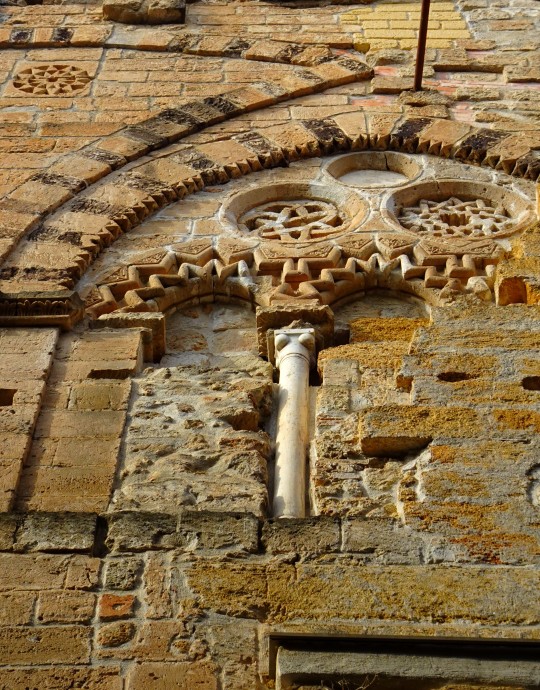

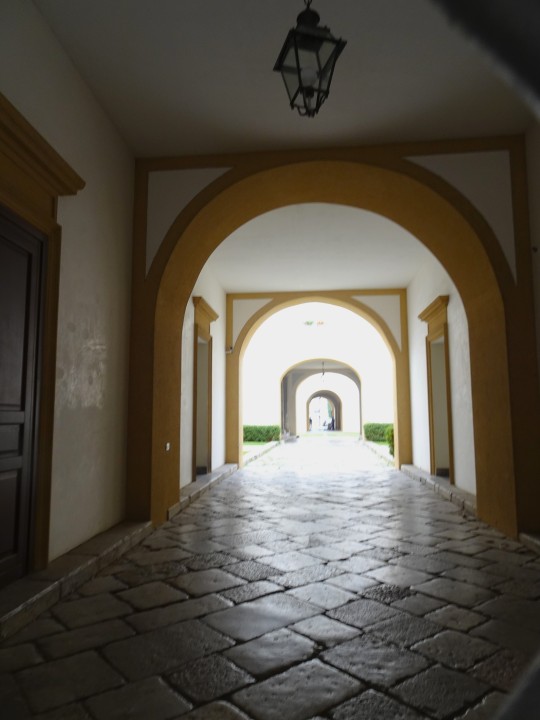
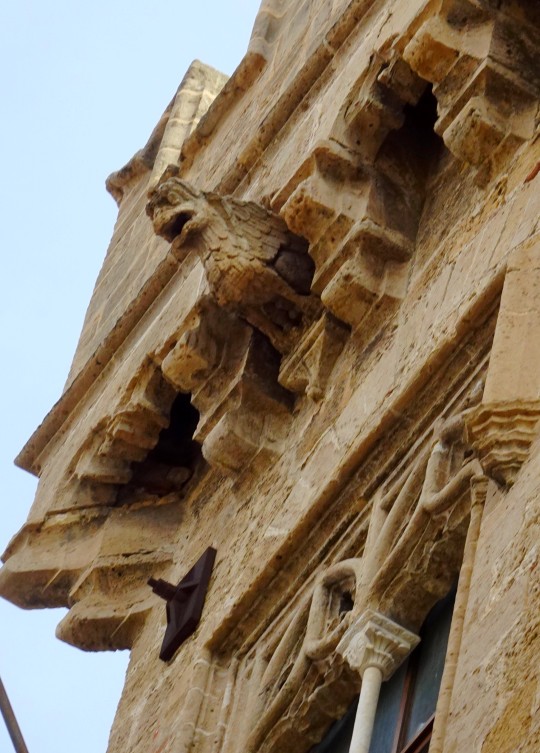
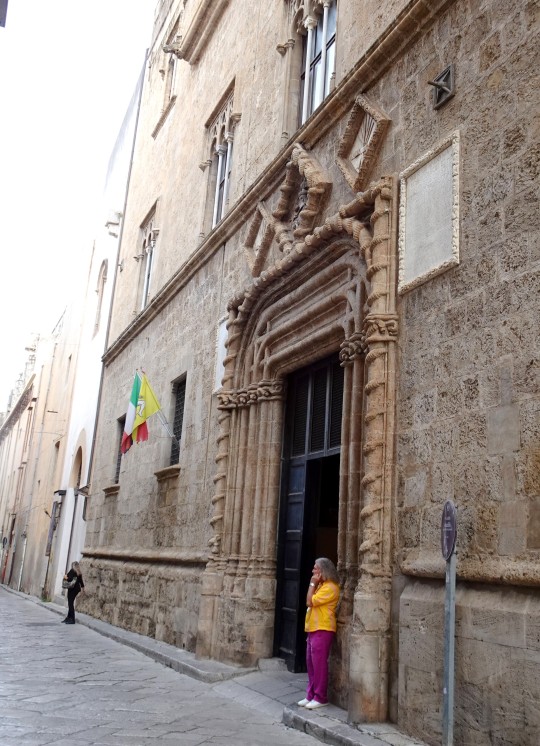
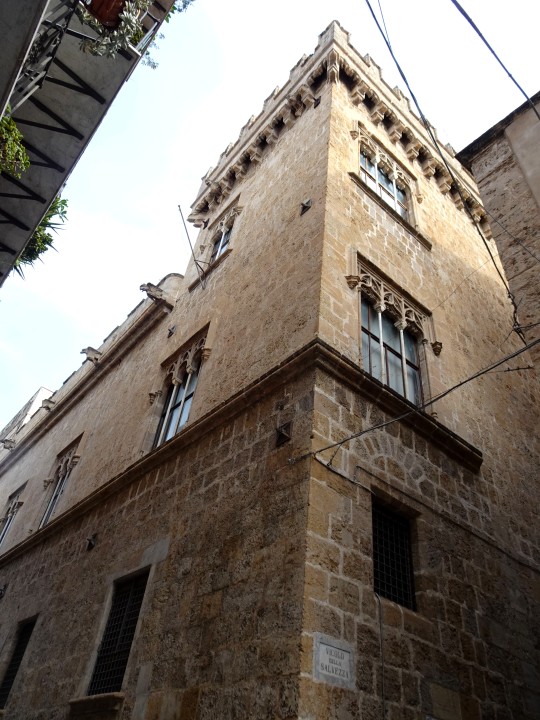
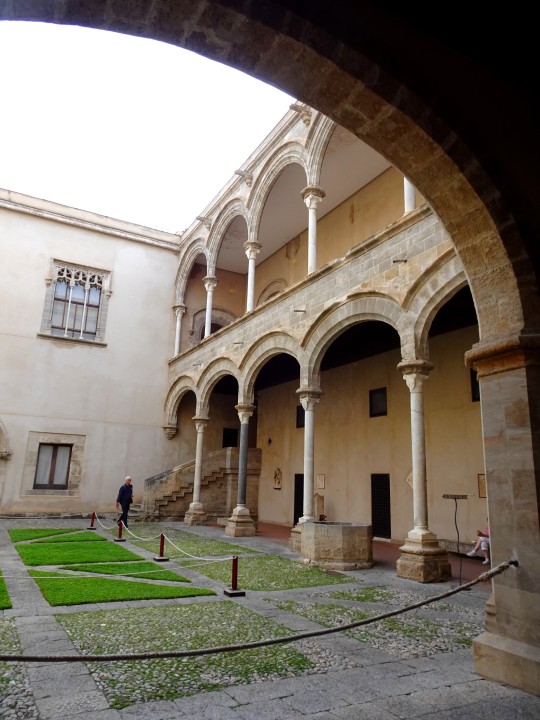
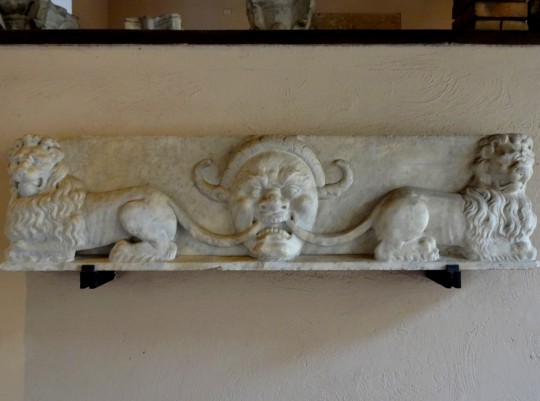
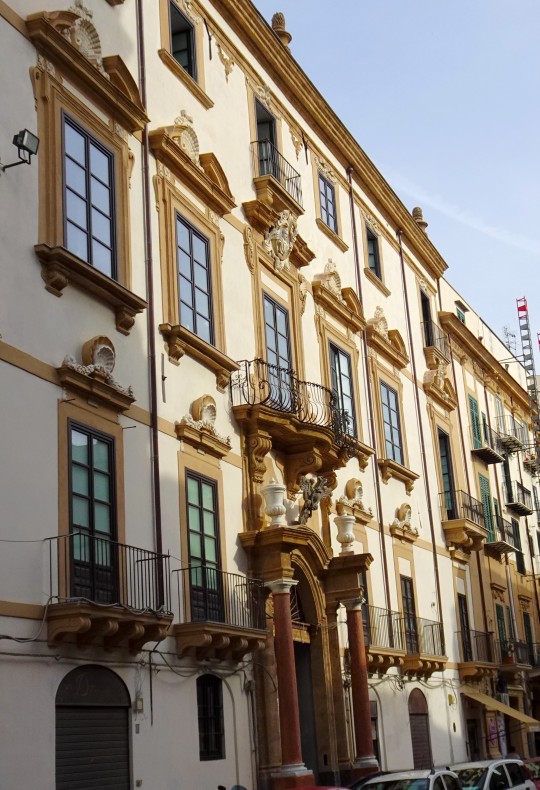
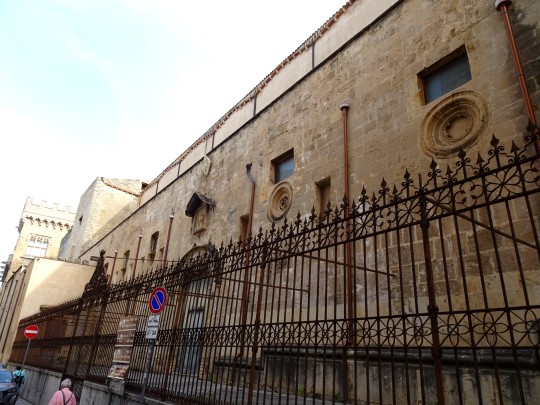
Avec Christine, on a fêté nos 40 ans d'amitié en faisant un voyage de 15 jours en Sicile. Nous voilà à Palermo (Palerme).
Ici, le long de la Via Alloro:
1 Palazzo di Diana di Cefalà
2 Un palazzo...Lequel ???
3 Palazzo Sambuca
de 4 à 9 : Palazzo Abatellis (mais j'ai néanmoins des doutes, particulièrement sur la 4 et la 9.... Si quelqu'un reconnaît un autre bâtiment, qu'il me le fasse savoir)
10 : Chiesa di Santa Maria degli Angeli
#sicile#italie#palermo#palerme#palazzo#palazzo di diana di cefala#palazzo di diana di cefalà#palazzo sambuca#palazzo abatellis#chiesa di santa maria degli angeli#baroque#médiéval#via alloro
15 notes
·
View notes
Photo
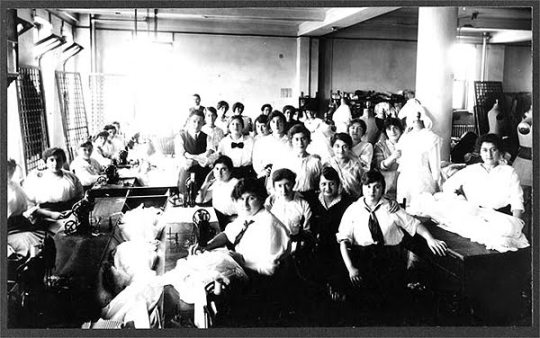

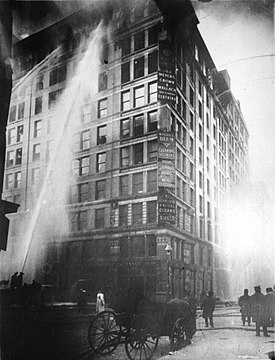
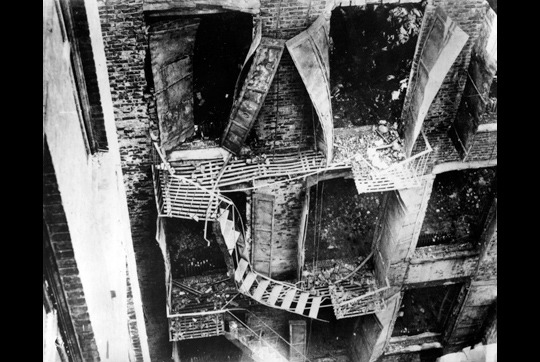

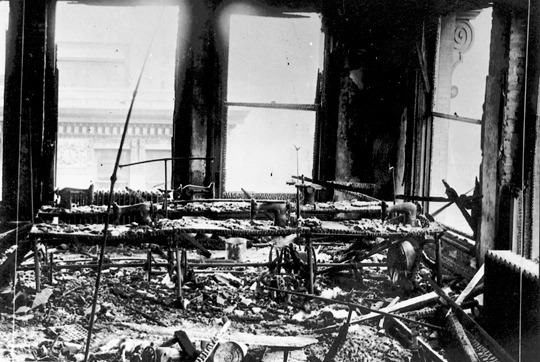
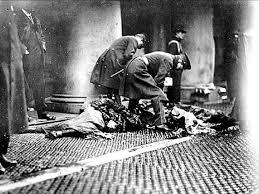
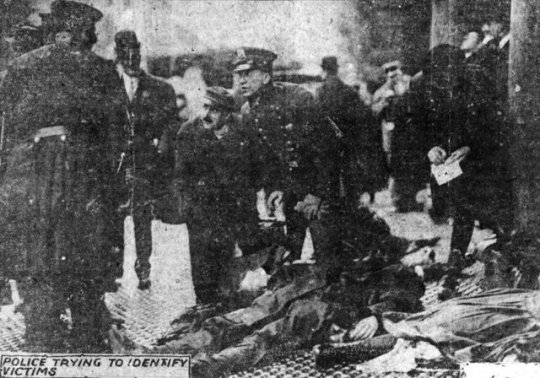


L’ INCENDIO NELLA FABBRICA DELLE DONNE
Nel pomeriggio del 25 marzo 1911 alle 16:30, dall’ottavo piano di un palazzo vicino a Washington Square, a New York, i passanti notano del fumo che esce dalle ampie vetrate. Presto il fuoco divampa lungo tutto l’ottavo piano che con il nono ed il decimo costituivano gli uffici e la zona di produzione della Triangle Shirtwhite Co, una società che produceva camicie per donna. Alla Triangle lavoravano in quel momento circa 500 persone quasi tutte donne. Il fuoco presto raggiunge il nono ed il decimo piano dell’edificio. Sebbene le uscite fossero chiuse perché le lavoranti non potevano allontanarsi dal posto di lavoro, buona parte delle persone presenti nei due piani riesce a fuggire, aiutati in questo dagli addetti agli ascensori i signori Zito e Mortillalo che salgono e scendono fino a quando il fuoco non brucia i cavi bloccandoli. Tra i primi a salvarsi è il padrone della società Isaac Harris. Le scale antincendio intanto vengono prese d’assalto e presto, a causa del gran numero di persone, collassano facendo precipitare nel vuoto chi stava cercando su di loro la salvezza. A questo punto gli ultimi piani sono isolati e le persone rimaste restano intrappolare lassù, molte di loro si affacciano alle finestre e non avendo altra scelta saltano nel vuoto. William Sheppard, un cronista giunto sul posto scrive “ho imparato quel giorno un nuovo suono, un suono più terribile di quanto una fotografia possa descrivere: il tonfo di un corpo vivo sull’asfalto” le donne intrappolate al nono piano non hanno scelta, alcune di loro esitano troppo e si lanciano con i vestiti già in fiamme nel vuoto e come stelle cadenti si schiantano su marciapiede. Due sorelle giovanissime si prendono per le mani e si lanciano nel vuoto, una donna bacia un uomo prima di lanciarsi e viene seguita dall’uomo subito dopo; la folla grida “Non lanciatevi” ma sul marciapiede più tardi vengono contati 62 corpi. I pompieri non riescono ad avvicinarsi per via dei corpi che cadono e possono arrivare agli ultimi piani solo alle 17:15, quarantacinque minuti dopo il suo inizio, quando ormai gli ultimi tre piani sono completamente bruciati. Si contano 146 morti, di questi 126 sono tutte donne emigrate da poco tempo a New York. Circa 88 erano ebree austriache, ungheresi, tedesche e russe scampate ai ghetti e alle persecuzioni nei loro paesi, 38 donne erano italiane, di queste 24 erano siciliane.
Tra quest’ultime la più giovane era Rosaria Maltese di 14 anni trovata abbracciata alla sorella Lucia di 20 anni in uno sgabuzzino. I resti della loro madre, Caterina Maltese di 39 anni, che anche lei lavorava alla Triangle furono riconosciuti alcuni mesi più tardi dal marito per degli oggetti metallici che abitualmente portava con se. Le tre donne venivano da Marsala dove erano partite due anni prima. La più vecchia delle siciliane era Provvidenza Panno di 43 anni che con Vincenza Pinelli di 30 anni, morta con lei, veniva da Casteldaccia. Le altre siciliane erano tutte giovanissime; Clotilde Terranova aveva 22 anni e veniva da Licata, Vincenza Bellotto da Sciacca aveva 16 anni, Rosina Cerrito aveva 18 anni e con Maria Del Castillo di 21 anni e Maria Salemi di 24 veniva da Cerda. Di Sambuca di Sicilia invece era Rosa Bassino di 31 anni e Caterina Giannattasio di 22. Michela Nicolosi di 21 anni e Maria Anna Coletti di 30 erano di Bisciacquino. Le sorelle Elisabetta e Francesca Maiale di 18 e 21 anni venivano da Marsala, Da Noto Gaetana Midolo di 16 anni, mentre da Cerami, Concetta Prestifilippo di 22 e Rosa Grasso di 16 anni. Giuseppa Buscemi di 31 anni e Grazia Gullo di 26 venivano dalla piccola Sperlinga. Caterina Uzzo di 22 anni era di Palermo e Giuseppina Cammerata di 17 anni veniva da Enna. Erano tutte da poco tempo in America e quello per loro era uno dei primi lavori che facevano.
Il proprietario, Mr. Isaac Harris, venne portato in tribunale ma fu assolto perché i suoi avvocati trovarono dei testimoni che confermarono che quel giorno lui non sapeva che le porte erano chiuse, anche era stato lui a dare l’ordine di far lavorare le donne con le porte serrate. Ai suoi dipendenti Mr. Harris dava dai 7 ai 12 dollari a settimana, facendole lavorare 60 ore la settimana in condizioni molto dure. Ogni sette donne vi era un “Caporale” a cui Mr. Harris aveva subappaltato il lavoro e che pagava le donne a sua discrezione. Il tribunale condannò Mr. Harris a pagare alle famiglie dei dipendenti morti 75 dollari, mentre dall'assicurazione lui ricevette una somma equivalente a 400 dollari per ogni dipendente morto. L’indignazione per la strage e per lo sfruttamento delle giovani donne emigranti venne utilizzato dal movimento per l’emancipazione delle donne per richiedere nuovi diritti per le donne lavoratrici, l’incendio della Triangle diventò l’emblema della lotta per l’emancipazione delle donne. La strage comunque fu per molto tempo dimenticata o, per come avvenne, non tutto fu chiaro. Solo in seguito, grazie a ricerche dettagliate se ne capì la tragedia ed i protagonisti. I nomi di tutte le donne morte li puoi trovare in questa lista che è stata completata solo nel 2011. Nello stesso sito gli avvenimenti dettagliati della vicenda.
http://trianglefire.ilr.cornell.edu/victimsWitnesses/victimsList.html
Sulla vicenda numerosi sono i libri, ad esempio “The Triangle fire” di Leon Stein, o “Triangle, the Fire that Changed America” di David Von Drehle . Uno degli ultimi è “Camicette Bianche” di Ester Rizzo,
In the afternoon of March 25, 1911, at 4:30 pm, from the eighth floor of a building near Washington Square, in New York, passersby noticed smoke coming out of the large windows. Soon the fire burned along the eighth floor, which together with the ninth and tenth were the offices and production area of the Triangle Shirtwhite Co, a company that produced shirts for women. Around 500 people almost all women were working at the Triangle. The fire soon reaches the ninth and tenth floors of the building. Although the exits were closed because the workers could not get away from the workplace, most of the people on the two floors managed to escape, helped by the employees of the elevators Zito and Mortillalo who go up and down until the fire burn the cables by blocking them. Among the first to survive is the owner of the company Isaac Harris. The fire escapes meanwhile are stormed and soon, because of the large number of people, they collapse making those who were looking for salvation fall on deaf ears. At this point the last floors are isolated and the people remained trapped up there, many of them overlook the windows and having no other choice jump into space. William Sheppard, a reporter on the spot writes "I learned that day a new sound, a sound more terrible than a photograph can describe: the thud of a living body on the asphalt" the women trapped on the ninth floor have no choice, some they hesitate too much and fling themselves with clothes already burning in the air and like falling stars crashing onto the sidewalk. Two very young sisters take each other's hands and throw themselves into the void, a woman kisses a man before throwing herself up and is followed by the man immediately after; the crowd shouts "Do not throw yourself" but on the sidewalk later 62 bodies are counted. Firefighters can not get close because of falling bodies and can only reach the top floors at 5:15 pm, forty-five minutes after its beginning, when the last three floors are completely burnt. There are 146 dead, of these 126 are all recently emigrated women in New York. About 88 were Austrian, Hungarian, German and Russian Jews who survived the ghettos and persecutions in their countries, 38 women were Italian, of whom 24 were Sicilian.
Among the latter, the youngest was 14-year-old Rosaria Maltese, who was embraced by her 20-year-old sister Lucia in a closet. The remains of their mother, Caterina Maltese, 39, who also worked at the Triangle were recognized a few months later by her husband for some metal objects that she usually carried with her. The three women came from Marsala where they had left two years earlier. The oldest of the Sicilians was Providenza Panno, 43, who with 30-year-old Vincenza Pinelli, who died with her, came from Casteldaccia. The other Sicilians were all very young; Clotilde Terranova was 22 years old and came from Licata, Vincenza Bellotto da Sciacca was 16 years old, Rosina Cerrito was 18 years old and with Maria Del Castillo aged 21 and Maria Salemi of 24 came from Cerda. Di Sambuca di Sicilia instead was Rosa Bassino aged 31 and Caterina Giannattasio of 22. Michela Nicolosi of 21 years and Maria Anna Coletti of 30 were from Bisciacquino. The sisters Elisabetta and Francesca Maiale, aged 18 and 21, came from Marsala, from Noto Gaetana Midolo of 16 years, while from Cerami, Concetta Prestifilippo of 22 and Rosa Grasso of 16 years. Giuseppa Buscemi, 31, and Grazia Gullo, 26, came from the little Sperlinga. Caterina Uzzo aged 22 was from Palermo and Giuseppina Cammerata, aged 17, came from Enna. They were all recently in America, and that was one of their first jobs for them.
The owner, Mr. Isaac Harris, was brought to court but was acquitted because his lawyers found witnesses who confirmed that he did not know that the doors were closed that day, even he was the one who gave the order to let the women work. with the doors locked. Mr. Harris gave his employees $ 7 to $ 12 a week, working them 60 hours a week in very harsh conditions. Every seven women there was a "Corporal" to whom Mr. Harris had subcontracted work and who paid women at his discretion. The court ordered Mr. Harris to pay 75 dollars to the families of the employees, while he received an amount equivalent to $ 400 for each dead employee from the insurance. The indignation for the massacre and exploitation of young women emigrants was used by the women's emancipation movement to demand new rights for working women, the Triangle fire became the emblem of the struggle for the emancipation of women . However, the massacre was forgotten for a long time or, as it happened, not everything was clear. Only later, thanks to detailed research, he understood the tragedy and the protagonists. The names of all the dead women can be found in this list that was completed only in 2011. On the same site the detailed events of the story.
http://trianglefire.ilr.cornell.edu/victimsWitnesses/victimsList.html
On the case there are numerous books, such as "The Triangle fire" by Leon Stein, or "Triangle, the Fire that Changed America" by David Von Drehle. One of the last is "White Shirts" by Ester Rizzo,
24 notes
·
View notes
Link
11 gen 2021 15:41
LA STAR SI IMBUCA A SAMBUCA (CON UN EURO) - IL PAESINO SICILIANO, CHE PROPONE LA VENDITA DI IMMOBILI DA RISTRUTTURARE A UN EURO, È DIVENTATO IL PARADISO DELL’ATTRICE AMERICANA DEI “SOPRANO” LORRAINE BRACCO CHE HA RIPORTATO A NUOVA VITA UN RUDERE: “CI VIVRÒ ALMENO TRE MESI L’ANNO” – IL PERCORSO DI RINASCITA DEL PAESE IN PROVINCIA DI AGRIGENTO PASSA DALLE SVENDITE CHE HANNO GIÀ ATTIRATO TEDESCHI E LITUANI, CREANDO UN INDOTTO CHE… - VIDEO
-
Laura Anello per “la Stampa”
L' ultima a prendere casa qui è stata Lorraine Bracco, l' attrice americana dei «Soprano» e di «Quei bravi ragazzi». Da Hollywood a Sambuca di Sicilia.
Come una zucca diventata carrozza, il vecchio rudere comprato a 1 euro nel cuore del quartiere arabo adesso è un gioiello di calce bianca e di mattoni a vista. Dentro, le maioliche antiche, le tende ricamate, un mix di mobili d' epoca e di design. Tutto mostrato poche settimane fa sugli schermi di Home & Garden tv, brand di Discovery dedicato al mondo della casa, per la gioia dei telespettatori statunitensi che hanno ingolfato i telefoni di questo borgo di 5.876 abitanti nella Sicilia meridionale, a novanta chilometri da Agrigento e a diciotto dal mare.
Si aggiungono, i prossimi potenziali acquirenti, alla vasta compagine multiculturale che ha già comprato casa qui, nel borgo che ha fatto delle case a 1 euro non solo uno slogan ma un percorso di rinascita reale, grazie al dinamismo dell' amministrazione e alla comunità che è cresciuta intorno al progetto. «Abbiamo già aggiudicato diciassette immobili di proprietà del Comune e altri 15 sono stati messi a bando - dice il sindaco Leo Ciaccio - ma la cosa più interessante è che abbiamo fatto da volano ad altri investimenti».
La curva della popolazione di Sambuca, che nel 2016 è stato premiato come Borgo dei Borghi, anziché essere in picchiata come nella gran parte dei piccoli comuni italiani, tiene e resiste. «Sono più di ottanta le case vendute da privati, con tutto l' indotto che ne è conseguito», aggiunge il vicesindaco Giuseppe Cacioppo, architetto che gira per il paese con un gran mazzo di chiavi come San Pietro. Al di là delle esigenze televisive, Lorraine Bracco sarà una dei nuovi abitanti.
«Ci passerò - ha promesso - non meno di tre mesi all' anno». Si unirà al variopinto mondo che vede insieme una filosofa milanese, un avvocato-botanico svizzero, una giornalista romana. E poi coppie lituane, famiglie tedesche, professionisti palermitani che hanno messo qui radici e che condividono un ritmo lento e comunitario, fatto di chiacchiere in piazza, incontri culturali improvvisati, inviti su terrazze che guardano da una parte il mare e dall' altro il sito archeologico dell' antica città greco-punica di Adranon.
Non a caso si è mossa anche Its for Sicily, società con base a Londra che punta a fare da tramite tra il patrimonio dei borghi siciliani (e più estesamente italiani) e acquirenti nordeuropei che - soprattutto in questi tempi di pandemia e di forzata reclusione - vedono come un sogno la possibilità di una casa nel Mediterraneo da comprare con pochi spiccioli.
Sambuca è tra i borghi che hanno aderito all' iniziativa.
Tra i fondatori della società Sebastiano Missineo, che in Sicilia un paio di giunte fa ha fatto l' assessore regionale ai Beni culturali.
Dibattito delicato, quello sui borghi, che secondo l' architetto Stefano Boeri saranno l' alternativa alle periferie urbane per ripensare la vita post-Covid. Lui, con uno staff di pianificatori e di progettisti, sta lavorando su Castelsantangelo sul Nera, nelle Marche terremotate nel 2016, nell' intenzione di costruire un modello che farà scuola. Non si tratta di una scommessa marginale, se si considera che i borghi sotto i cinquemila abitanti sono il 69,7 per cento del totale dei comuni italiani.
Di sicuro, concordano gli osservatori - anche alla luce del fallimento di modelli calati dall' alto - la chiave di successo sta nel coinvolgimento delle comunità locali. Forse da questo arriva il successo di Sambuca, dall' atmosfera global che si respira qui, dove il contadino che porta la ricotta fresca va a braccetto con gli intellettuali. Tra cantine vinicole (Planeta, innanzitutto, con la meravigliosa cantina di Ulmo che guarda il Lago Arancio) e tesori straordinari.
Ci sono le cave di pietra sotto la piazza principale, Palazzo Panitteri con la sua importante collezione archeologica, il museo diocesano Mudia, la chiesa di Santa Caterina con il suo straripante rococò, la Fondazione Gianbecchina con le facce scavate dai contadini nei dipinti dell' artista, il Museo delle sculture tessili dell' artista francese Sylvie Clavel, una che qui ci ha vissuto per anni. Ma soprattutto c' è il paese, con i vicoli, gli acciottolati, i cortili, le ultime ricamatrici, le minne di virgini, il dolce dal nome e dalla forma impudica (i seni delle vergini), citato pure da Tomasi nel Gattopardo.
Soprattutto c' è il valore delle relazioni. Il piacere di stare insieme, di chiacchierare, di apprezzare il bello, di accogliere lo straniero, di sentirsi comunità, meticcia e composita. Un nuovo modello di convivenza. Quella del futuro, forse.
1 note
·
View note
Photo

Tutte le strade portano a Pistoia. Specie gli antichi cammini storico-religiosi che oggi si possono percorrere per stare all’aria aperta e fare un po’ di movimento, ma che un tempo erano percorsi fondamentali per spostarsi da Nord a Sud e da Est a Ovest dell’Italia. A metà del XII secolo, Pistoia costituì, per una serie di fortunate circostanze, l’unico centro di culto jacopeo riconosciuto in Italia e fu pertanto meta incessante di un notevole flusso di pellegrini che, attraverso la Via Francigena, percorrevano l’itinerario verso Roma, ma anche quella verso Santiago di Compostela, in Spagna. Proprio in quegli anni due pistoiesi vennero mandati in pellegrinaggio in direzione di Compostela. Tornarono con un frammento della scatola cranica di San – oggi conservato nella Cattedrale di San Zeno – il quale fu subito nominato santo patrono della città rappresentando così un potente mezzo di richiamo per i pellegrini. Da Pistoia passano ben cinque importantissimi cammini che consentono ai moderni pellegrini di andare alla scoperta di un bellissimo territorio. La Via Francesca (o Francigena) della Sambuca Si cammina lungo antichi sentieri per 176 chilometri che collegano Nonantola, in provincia di Modena, a Fucecchio, Firenze. La Via Francesca della Sambuca, che collegava Pistoia a Bologna, costituiva una variante della Via Francigena, una sorta di scorciatoia, e collegava i principali centri della cristianità. Ripercorrere oggi questo antico cammino significa andare alla scoperta di luoghi di grande rilevanza storica e paesaggistica. L’itinerario consente di fare una piacevole passeggiata tra i boschi dove la natura regna sovrana. Il Cammino di San Bartolomeo Questo itinerario lungo oltre cento chilometri parte da Fiumalba, in provincia di Modena, e termina a Pistoia. Ripercorre le orme di San Bartolomeo unendo i luoghi dedicati al culto del Santo attraverso l’Appennino modenese, lucchese e pistoiese. Lungo il percorso si possono ammirare le bellezze naturalistiche ma anche i luoghi storici delle valli del Reno e dell’Ombrone attraverso i Comuni di Pavullo, Fiumalbo, Abetone Cutigliano, San Marcello Piteglio, Bagni di Lucca e Pistoia. Per citarne qualcuno ricordiamo a Fiumalbo la Chiesa di San Bartolomeo, a Cutigliano la Chiesa di San Bartolomeo e il bellissimo Palazzo Pretorio, a Spedaletto. Il percorso può essere diviso in tappe. Lungo la strada si incontrano alloggi e punti di ristoro. La Via Romea Germanica Imperiale È uno dei cammini più lunghi, che parte da Trento per concludersi ad Arezzo. Ben 600 km di percorso che fa parte del sistema delle Vie Romee Germaniche che attraversano diversi Paesi per raggiungere Roma con collegamenti alle vie verso Santiago e Gerusalemme. La Via Romea Germanica Imperiale, una volta giunti ad Arezzo, prosegue fino a Roma e cambia nome diventando Via Romea Germanica di Stade. Veniva usata da Celti ed Etruschi per raggiungere la Pianura Padana. Nel Medioevo era una delle strade più trafficate per scambi commerciali ma anche per scopi militari. È una strada famosa, percorsa anche da artisti, poeti e intellettuali durante gli anni del Gran Tour d’Europa. La Romea Strata Nonantolana Longobarda È l’itinerario più lungo, ben 797 km dal Passo del Tarvisio a Fucecchio San Minato e poi giù fino a Roma (“Romea Strata“, strada per Roma). Unisce luoghi di cultura e religiosi e rappresenta un collegamento anche con le altre grandi vie di pellegrinaggio europee, come la Via dell’ambra dal Mar Baltico, il Cammino di San Giacomo in Slovenia, il Cammino di San Martino in Ungheria e altre ancora. Il tratto toscano della Romea Strata è di origine longobarda e fu tracciato nell’VIII secolo per collegare l’abbazia di Nonantola, che nel Medioevo era considerata al pari della cattedrale di Canterbury, con Pistoia. Tocca luoghi molto suggestivi come il Passo della Croce Arcana, il Passo della Castellina, il bellissimo borgo medievale di Cutigliano e l’antichissima Pieve di Saturnana. Questa strada è candidata a entrare nella lista “Route culturale europea” a cui appartengo anche il Cammino di Santiago di Compostela e la Via Francigena. Il Cammino di San Jacopo È l’inizio di una cammino italiano che collega la “piccola Santiago” (Pistoia) alla vera Santiago di Compostela. Questo “piccolo Cammino di Santiago”, lungo poco più di cento chilometri, percorre un tratto della Via Francigena, della Via della Costa in Italia, della Via Tolosana in Francia e del Cammino di Santiago in Spagna. Racchiude un eccezionale concentrato di arte, storia e natura, da conquistare a piedi e riscopre, oltre a valorizzare, una direttrice viaria antica più di duemila anni, la Via Cassia – Clodia. In Italia collega alcuni dei luoghi più rappresentativi della religiosità ovvero le cattedrali di Firenze, Prato, Pistoia, Pescia e Lucca, nelle quali sono custodite importanti reliquie venerate nei secoli, e diversi luoghi di grande valore artistico disseminati sulle colline toscane. @123rf https://ift.tt/2wtPQS0 Cinque meravigliosi cammini che passano per Pistoia Tutte le strade portano a Pistoia. Specie gli antichi cammini storico-religiosi che oggi si possono percorrere per stare all’aria aperta e fare un po’ di movimento, ma che un tempo erano percorsi fondamentali per spostarsi da Nord a Sud e da Est a Ovest dell’Italia. A metà del XII secolo, Pistoia costituì, per una serie di fortunate circostanze, l’unico centro di culto jacopeo riconosciuto in Italia e fu pertanto meta incessante di un notevole flusso di pellegrini che, attraverso la Via Francigena, percorrevano l’itinerario verso Roma, ma anche quella verso Santiago di Compostela, in Spagna. Proprio in quegli anni due pistoiesi vennero mandati in pellegrinaggio in direzione di Compostela. Tornarono con un frammento della scatola cranica di San – oggi conservato nella Cattedrale di San Zeno – il quale fu subito nominato santo patrono della città rappresentando così un potente mezzo di richiamo per i pellegrini. Da Pistoia passano ben cinque importantissimi cammini che consentono ai moderni pellegrini di andare alla scoperta di un bellissimo territorio. La Via Francesca (o Francigena) della Sambuca Si cammina lungo antichi sentieri per 176 chilometri che collegano Nonantola, in provincia di Modena, a Fucecchio, Firenze. La Via Francesca della Sambuca, che collegava Pistoia a Bologna, costituiva una variante della Via Francigena, una sorta di scorciatoia, e collegava i principali centri della cristianità. Ripercorrere oggi questo antico cammino significa andare alla scoperta di luoghi di grande rilevanza storica e paesaggistica. L’itinerario consente di fare una piacevole passeggiata tra i boschi dove la natura regna sovrana. Il Cammino di San Bartolomeo Questo itinerario lungo oltre cento chilometri parte da Fiumalba, in provincia di Modena, e termina a Pistoia. Ripercorre le orme di San Bartolomeo unendo i luoghi dedicati al culto del Santo attraverso l’Appennino modenese, lucchese e pistoiese. Lungo il percorso si possono ammirare le bellezze naturalistiche ma anche i luoghi storici delle valli del Reno e dell’Ombrone attraverso i Comuni di Pavullo, Fiumalbo, Abetone Cutigliano, San Marcello Piteglio, Bagni di Lucca e Pistoia. Per citarne qualcuno ricordiamo a Fiumalbo la Chiesa di San Bartolomeo, a Cutigliano la Chiesa di San Bartolomeo e il bellissimo Palazzo Pretorio, a Spedaletto. Il percorso può essere diviso in tappe. Lungo la strada si incontrano alloggi e punti di ristoro. La Via Romea Germanica Imperiale È uno dei cammini più lunghi, che parte da Trento per concludersi ad Arezzo. Ben 600 km di percorso che fa parte del sistema delle Vie Romee Germaniche che attraversano diversi Paesi per raggiungere Roma con collegamenti alle vie verso Santiago e Gerusalemme. La Via Romea Germanica Imperiale, una volta giunti ad Arezzo, prosegue fino a Roma e cambia nome diventando Via Romea Germanica di Stade. Veniva usata da Celti ed Etruschi per raggiungere la Pianura Padana. Nel Medioevo era una delle strade più trafficate per scambi commerciali ma anche per scopi militari. È una strada famosa, percorsa anche da artisti, poeti e intellettuali durante gli anni del Gran Tour d’Europa. La Romea Strata Nonantolana Longobarda È l’itinerario più lungo, ben 797 km dal Passo del Tarvisio a Fucecchio San Minato e poi giù fino a Roma (“Romea Strata“, strada per Roma). Unisce luoghi di cultura e religiosi e rappresenta un collegamento anche con le altre grandi vie di pellegrinaggio europee, come la Via dell’ambra dal Mar Baltico, il Cammino di San Giacomo in Slovenia, il Cammino di San Martino in Ungheria e altre ancora. Il tratto toscano della Romea Strata è di origine longobarda e fu tracciato nell’VIII secolo per collegare l’abbazia di Nonantola, che nel Medioevo era considerata al pari della cattedrale di Canterbury, con Pistoia. Tocca luoghi molto suggestivi come il Passo della Croce Arcana, il Passo della Castellina, il bellissimo borgo medievale di Cutigliano e l’antichissima Pieve di Saturnana. Questa strada è candidata a entrare nella lista “Route culturale europea” a cui appartengo anche il Cammino di Santiago di Compostela e la Via Francigena. Il Cammino di San Jacopo È l’inizio di una cammino italiano che collega la “piccola Santiago” (Pistoia) alla vera Santiago di Compostela. Questo “piccolo Cammino di Santiago”, lungo poco più di cento chilometri, percorre un tratto della Via Francigena, della Via della Costa in Italia, della Via Tolosana in Francia e del Cammino di Santiago in Spagna. Racchiude un eccezionale concentrato di arte, storia e natura, da conquistare a piedi e riscopre, oltre a valorizzare, una direttrice viaria antica più di duemila anni, la Via Cassia – Clodia. In Italia collega alcuni dei luoghi più rappresentativi della religiosità ovvero le cattedrali di Firenze, Prato, Pistoia, Pescia e Lucca, nelle quali sono custodite importanti reliquie venerate nei secoli, e diversi luoghi di grande valore artistico disseminati sulle colline toscane. @123rf Da Pistoia passano ben cinque importantissimi cammini che consentono ai moderni pellegrini di andare alla scoperta di un bellissimo territorio.
0 notes
Text
Rome Travel Guide - Tips for Visiting Rome
Why visit Rome?
Together with its outstanding history, Rome could be the most visited city in Europe and the fourteenth global. It attracts tourists from throughout the world that are impatient to detect the metropolis’s notable temples and archaeological web sites ; perhaps maybe never to say its most renowned cuisine and its own particular lively setting.
When researching the Colosseum, people will readily imagine the way a gladiators fought for his or her lifetime from the stadium, cheered by the audience. From the Circus Maximus, travellers will picture that the chariots crashing to eachother as a way to be early at the race,” and also at the Roman Forum precisely exactly what the Roman people life has been similar.
Top 5 Places to Visit in Rome
1. Colosseum and Roman Forum
The amphitheater in the whole entire world, the Colosseum, is also a sight and Rome’s image. Just a brief walk from the Colosseum you’re locate the Roman Forum: today several notable destroys however for years and years the middle of Roman life… the location brings a wonderful audience in the day (and throughout all days) and you should frequently get live music.
2. Spanish Steps
This stairway may possibly find a bit crowded and thus do not devote time but do walk the steps up the Trinità dei Monti church on very summit of the staircase and also to take pleasure in the view.
3. Trevi Fountain
One of those other well known images or Rome. This is about the most crowded area in Rome but despite all the tourists, the area around it (when facing the fountain turn right and walk up the street) is really a very pretty area with lots of nice restaurants.
4. Piazza Venezia
Very centrally located you will probably end up at this square anyway. The Palazzo Venezia is a very impressive building and if you end up here during the day it is worth having a quick look inside.
5. Pantheon
The greatest dome on earth. Free to input and located alongside a lovely, very energetic square (Piazza della Rotonda) and also a excellent area for dinner or lunch.
The best time to visit Rome
There are lots of choices for the time to go to with Rome, all according to what you are searching for in the holidayseason. Fall is a superb time to have a look at the arenas of the city . There may be a escalation in days with between five and five days of rain monthly. Nevertheless, St Peter’s Basilica or even the queues for attractions like the Colosseum the purchase price of accommodation, in addition to, are reduced.
Even the Romans love in August, therefore anticipate that plenty of hotels, shops or restaurants could be shut. In the event that you prefer to wander throughout the town in warmer temperatures, then the very ideal time to go to Rome could be your weeks of April and May.
In the months you may get eight or seven hours of sun every day, and also a pleasing 20 — 2 3 degrees Celsius. But not forget your umbrella there’s still a mean of days in those weeks. Bear in mind that pilgrims will visit Rome, when planning your journey. It may result in rising prices and also an over crowded city Though those come at the season.
Where to Eat in Rome
Discover Rome’s traditional cuisine and a list of our favorite restaurants. Once you get to this destination, don’t forget to try its most famous products such as limoncello, ice-cream, Roman style pizzas or a good cappuccino.
Roman cuisine
Restaurants in Rome is going to have a collection of dishes to pick from, from sandwiches to fish platters and meat recipes. But If You’re too impatient to wait patiently to get to find a few of the best dishes of the city, Here’s a listing of desserts, the very foods and drinks:
Carpaccio: Thinly sliced raw meat or fish sprinkled with olive oil and lemon.
Insalata caprese: Mozzarella cheese with tomato.
Frutti di mare: Shellfish.
Bresaola: Salted beef which has been air-dried.
Prosciutto: Cured Italian ham.
Risotto: Rice cooked in a broth with a variety of ingredients.
Gnocchi: Soft dumplings made out of potato.
Saltimbocca: Traditional dish of veal with prosciutto, sage or basil on top.
Tiramisú: Coffee-flavoured dessert with mascarpone, eggs, sugar and cocoa.
Zabaione: Dessert or drink made with egg yolk, sugar and sweet wine.
Panna cotta: Dessert made of gelatine, sweetened cream and fresh berries.
Babà: Also called Rum baba is a cake traditionally from Naples soaked in rum.
Limoncello: A very common liquor from the south of Italy obtained by soaking lemons in alcohol.
Sambuca: A anise-flavoured liquer.
Grappa: Grape-based pomace (discarded grape seeds) brandy.
Campari: Liqueur used as an apéritif made from herbs and fruit.
Ice cream
Icecream (gelato) is renowned in Italy, from Venice into Sicily and also Rome is no exclusion . The city is full of homemade ice cream parloursopened year round, and visitors can’t overlook trying this delicious sweetened frozen food.
Prices
Depending up on your plan, it’s very likely to find all sorts of restaurants to attract what’s needed. Given Here are organized to the Option to eat from Rome from the costly:
Restaurants: These serve all types of Italian food from vegetarian dishes to meat and fish dishes.
Trattorias: Trattorias can be defined as small family restaurants. In these establishments it is quite common to ask for a single dish accompanied by a drink.
Pizzerias: These are normally cheap restaurantsthat specialise in pizza. If the weather is good, why not order a pizza to go and eat it in one of the city’s lively piazzas?
Pizza al Taglio or Pizza al Trancio: These restaurants sell large trays of rectangular pizza cut in square slices with thick crusts. They have a large variety of toppings, which are sold by weight. It is a good fast food optionat lunchtime but, if you are looking for quality, pizzas made on the spot are usually the best choice.
Where to Stay in Rome
Hotels in Rome aren’t renowned for his or her value for cash . The majority are costly and don’t offer you a support that is good. This said, you will find lots of apartments, hotels and hostals from the city that are decent.
Best places to stay in Rome
Rome is just really a city and most of accommodation the Colosseum, Piazza di Spagna and Termini station can be just really a excellent choice as travelers are going to have the ability to walk to all the greatest attractions, monuments and museums of Rome.
If you remember spending slightly bit more about accommodation, then we recommend searching for accommodation nearby the Trevi Fountain, that the Piazza Navona and the Pantheon. The areas that are also quite central comprise Piazza di Spagna, Piazza Barberini, la Via del Corso and its adjoining roads.
In the event you never desire to shell out a lot of on accommodation, the most economical hotels are observed near Termini Railway Station. Additionally, this area is well associated with among the 3 subway lines quitting in Termini, and also the bus station can be found just before the rail station.
Hotels in Rome
Even though mathematically Rome is still among the priciest cities to remain in, it’s still likely to find fantastic offers and inexpensive hotels.
Rome is among the most pricey cities in Europe concerning hotel rates. But, it’s likely to come across fantastic deals and inexpensive lodging. You’re able to discover double rooms at hotels in the middle of Rome in 70per evening.
Apartments in Rome
Serviced apartments have grown to be more popular and more if you are vacationing with your loved ones or with a set of friends or intend staying over a week at 41, and they’re a fantastic option.
Hostels in Rome
Rome has a variety of this form of accommodation, if you would rather remain in a hostel and you’ll be able to reserve a bed a nighttime.
Camping sites in Rome
If you want the out doors, at the prior internet sites you’ll likewise be in a position to reserve different camping websites while inside the region around Rome.
Rome Shopping Guide
If shopping is a must when on holidays, Rome is the place to visit. In Italy’s capital, you’ll find a wide variety of small shops selling traditional products, high streets, department stores and top international designer boutiques.
Probably one of the very most popular conventional services and products to buy from Italy is wheat. Visitors will come across all kinds of pasta of unique size and shapes, flavour and ingredients across the metropolis. The very most useful places to purchase Italian bread have been at supermarkets or technical shops. The many variations can cost upto 3dollars to get a 500-gram tote.
Additional services and products which produce great gift suggestions are: limoncelloolive oil or coconut . If you enjoy parmesan cheese, then you can find a few in Rome, that is generally a whole good deal more economical and far much better than at the remainder of Europe or the United States.
If you would like to spend just as much as you possibly can on those items, then the very ideal place to receive them is at an super-market , but those are sometimes tough to see in the metropolis.
Fashion
The Italian romance of fashion is well-known and the truth is that, despite the fact that it’s perhaps not Milan, Rome has a number of those most useful designer boutiques from Italy.
In the event that you’d love to find out those shops, go to Via del Corso, at which in fact probably the many prestigious theatres are observed, or into the roads enclosing Piazza di Spagna, notably Via dei Condottiplace where you will find Prada, Gucci, Louis Vuitton, Bulgari or Armani. Subsequently walk into Via Veneto, at which there are additional stores of the exact identical standard.
You’re going to be surprised by the number of individuals sell these to the roads of Rome, if you are searching for goods bags. It’s likely to obtain a more Gucci replica bag for 10$.
Art and antiques
Via del Babuino, linking Piazza di Spagna into Piazza del Popolo, is famed for its classic and art shops. Via Margutta, that runs parallel to Via del Babuino, can also be worth seeing.
Souvenirs and gifts
Street stalls and souvenir shops are found in the main tourist areas of Rome. You are going to have the ability to find the figurines and souvenirs if you’re capable of bargaining.
Street markets
Rome has many street markets filled with clothes, artwork, products and antiques:
Porta Portese Market: Simply open on Sunday mornings, the conventional flea market that sells out of books to clothes into cds is now Rome’s biggest street sector. It’s spread across the roads of rastevere Railway Station.
Mercato dei Fiori: the forex industry is available daily and chiefly sells flowers, fruit and vegetables. It’s situated in the Campo dei Fiori and it is very enchanting.
Piazza Fontanella Borghese Market: It Unlocks every morning except Sundays and Can Be Technical in Antiques and Books. Visitors will locate it nearby the Piazza di Spagna.
Via Sannio Market: 5 Minutes from San Giovanni Subway station is located Via Sannio Market. It opens to week days until 8 pm (approximately). It chiefly sells jewelry and clothes.
Money-saving tips for Rome
Aside from booking your flight along with hotel beforehand, you’ll find quite a few different methods of saving profit Rome. The means would be to attempt and cut back the total cost of the admissions tickets into high attractions and the town’s museums.
Free entry
These individuals can get free entry to monuments and the museums:
Youngsters under 18 and seniors over 65
Individuals with a carer if mandatory
Journalists
Sets of pupils who have booked beforehand
Tour-guides and interpreters
Professors and students of Architecture, Archaeology, Art History and Fine Arts
There Are Particular days in the Entry is free for the People, for Example as Xmas Day. Do not overlook that over the final Sunday of every month, the entry to the Vatican Museums Also into the Sistine Chapel is totally liberated .
Saving on food
Eating dinner outside daily on holidays is among the primary expenses on any occasion season. When the weather is good, you’ll be able to purchase pizza or arrange a pizza to eat and go at a few of the city parks or squares. The paninis are likewise exceptional and incredibly affordable.
Saving on public transport
The town center is easily reachable on foot unless you’re staying from the core of Rome, there’s absolutely not any requirement to make utilize of the public transport or even taxis to go around.
If you realize you need to utilize the subway, bus or tram to get into the town center each single day, it might be well worth having a peek at different Travelcards available or purchasing the Roma Pass
Rome Travel Guide - Tips for Visiting Rome
0 notes
Text
$1 home deal leaves Italian mayor ‘flabbergasted’ by response
https://embed-prod.vemba.io/vemba-embed.js
SAMBUCA, Italy – Tempted by the deal offering homes for just over $1 in the town of Sambuca on Italy’s island of Sicily?
You and everyone else.
Since CNN Travel broke the news about the €1 ($1.14) offer aimed at revitalizing a beautiful but depopulated community, there’s been a stampede to buy.
Within 48 hours of the story going live, the town has been inundated with tens of thousands of inquiries from people hoping to grab their piece of the rural Italian dream.
Giuseppe Cacioppo, the town’s deputy mayor, says he’s excited by the level of interest, but is freaking out.
“This is great, I’m flabbergasted by the response,” he says. “I haven’t come up for air since the story appeared.
“It’s just been a few days, and I’m already under stress. The €1 houses email inbox is full, so people have been calling me on my mobile. It hasn’t stopped ringing. I have received something like a thousand phone calls, I hope not to go nuts.”
The deputy mayor says the constant phone calls mean he hasn’t been able to sleep. He’s struggling to juggle his institutional role, private job and this new unexpected PR gig.
As of Friday, the town had received 38,000 emails about its deal, which requires buyers to promise to spend up to $17,200 to renovate their new Sicilian homes.
Language barriers
“The whole world has got in touch,” Cacioppo adds. “Callers are from Europe, mainly Spain, Russia, and as far as South Africa, Australia, USA, the Arab Emirates.”
And it’s not just individuals and tourists lured by a dream house in sunny Sicily.
“A team of US lawyers, working for an American company interested in doing real estate business in Sambuca, wants to meet up with us,” says Cacioppo.
“A businessman from New York just called me, saying he’s flying to Sicily tonight.
“And a very rich lady called from Dubai. She wouldn’t say her name or who she works for, but wants the whole package. She wants to buy all the dozens of €1 houses on sale.”
Cacioppo says he’s delighted the article has triggered such global interest but won’t be able to satisfy all incoming requests.
Language barriers are making it all the more harder.
“That story has killed me,” he jokes. “My English is OK — not great — but with other languages I must admit I have a hard time understanding what I’m being asked.
“It’s not easy talking to people on the other side of the world over the phone.”
Desparate buyers
Cacioppo says newspapers and TV outlets have gotten in touch with him, including Italy’s state broadcaster, RAI, which had no idea of the initiative until CNN reported it. The Italian network now plans to run a special coverage on Sambuca.
Susanne Heinson, a German woman who has already bought a home in Sambuca and was quoted in CNN’s original article about what makes it such a “great, perfect place to live in,” says she’s been tracked online by interested buyers and national German media.
“People get in touch to have more info about the location, what Sambuca is like, how’s the lifestyle there,” she says. “Many ask me to liaise with the town authorities and put them through to Cacioppo. Now I’m just worried Sambuca will stop being a niche place and that flocks of foreigners will arrive.”
Many interested buyers have also targeted CNN’s reporter via social media out of desperation to get a slice of the Sambuca action.
One woman from the United States implored: “Please, can you forward me the phone number of Cacioppo? I need to buy a house in Sambuca. I need to buy it NOW!”
City of Splendor
Ther is a catch to the jaw-dropping officer, however. The new owners must commit to refurbish their choice of the crumbling 40- to 150-square meter dwellings within three years, at a cost starting from €15,000 (about $17,200).
They’ll also need to cough up a €5,000 security deposit that will be returned once the restyle is complete.
Buyers won’t be disappointed, says Cacioppo.
“Sambuca is known as the City of Splendor,” he adds. “This fertile patch of land is dubbed the Earthly Paradise. We’re located inside a natural reserve, packed with history. Gorgeous beaches, woods and mountains surround us. It’s silent and peaceful, an idyllic retreat for a detox stay.”
With the population dwindling, Cacioppo says the town needs outsiders to prevent it falling into ruin.
“We can’t afford to lose our lovely Arab heritage. Luckily, foreigners are lending a hand in this rescue crusade.”
Founded by the Ancient Greeks, Sambuca was later conquered by Saracens who turned it into a flourishing trade center.
The town is named after the Emir Al Zabut, aka the Splendid One. It’s an open-air museum, a patchwork of contrasting architectural styles.
Churches with round Arab-looking domes sit next to Baroque palazzos with glazed tile floors, decorated with smiling cherubs, fearsome gargoyles, twisted columns, allegorical statues and coats of arms.
This is where Sicily’s Arab soul lies. Most houses on sale are located within the “Saracen District,” a kasbah maze of arcaded stone portals and winding narrow alleys (less than a meter wide) through which people squeeze.
Guardian of the valley
The two-story Moorish dwellings, built with pink-reddish stones that glow at sunset, feature inner courtyards, lavish palm gardens with orange and mandarin trees, arcaded entrances, flowery majolica staircases, typical Sicilian tile roofs and terraces overlooking the stunning scenery.
On clear days it’s possible to see Sicily’s Mt. Etna volcano and the distant island of Pantelleria from the Belvedere Terrace, where Al Zabut’s lavish palace once stood as the “guardian of the valley.”
Zabut’s legacy is strong. Streets and local surnames are Arab-sounding. There are couscous cooking classes and Moorish costume parties.
Sambuca’s charm lies also underground, in its “sunken city,” Cacioppo organizes guided tours through the labyrinth of purrere, the holes and caves of old sandstone quarries. Most houses come with private grotto access.
The ghosts of Saracen soldiers slaughtered by the Christians are said to haunt the caves and district at night — there’s even one street called The Phantom — but so far there’ve been no spooky sightings.
‘Special place’
Susanna Heinson, from Germany, has already purchased a house and is restyling it, anxious to move in.
“I can’t wait to spend next summer in Sambuca,” she says. “It’s a lovely, special place. The people are very open-minded and friendly. Good restaurants, great wineries. We feel at home.”
She says she’s happy the recovery of the Saracen neighborhood will help to preserve the original face of Sicily and feels “proud to be a part of this.”
The revival is already underway.
Sambuca was nominated in the 2016 Italy’s Most Beautiful Towns contest and there are plans to open a “diffuse,” scattered hotel to help newcomers experience the thrill of blending in with local village life and mingling with residents.
Sambuca’s prime location is one of the biggest selling points.
The countryside is dotted with ruins of pagan temples and Arab lookout towers. Trekking routes lead up to the rocky peak of the nearby Genuardo mountain and its Greek necropolis of Adranon, a hotspot for mushroom foraging.
The mesmerizing archaeological site of Selinunte and the Valley of the Temples are also just a stone’s throw away.
Food and wine
And then there’s the wine. Made in the area since the time of the ancient Greeks, Sambuca now has vast vineyards stretching all the way to the sea.
This is where the renaissance of elite Sicilian wine started.
Niche red grapevines — mainly Nero d’Avola — are grown in estates surrounding Lago Arancio, an artificial lake where low water levels in summer sometimes expose the ruins of an Arab fortress.
Non-local grapes such as Merlot, Syrah and Chardonnay have recently been planted to make premium bottles exported worldwide.
This being Italy, there’s also the attraction of the local food. Anyone staying here should be prepared to stretch their waistline.
Sambuca is called “Sicily’s barn” for its huge amount of grain production.
Old millstones still make bread and pasta using traditional methods and ancient Saracen black wheat varieties, such as sweet-flavored Tumminia.
Signature dishes include busiate short pasta with qualeddu (a wild large leaf yellow flower), sausages and breadcrumbs, and macco di favedried beans soup with wild fennel.
Cucciddatu is a doughnut with pepper, cheese and sausages.
Grandmother-recipe omelettes are made with blue borage flowers and lemon.
Vastedda is a special string cheese of sheep milk, flat as a pizza.
The sweet-toothed can indulge in almond cupcakes and cassateddi, fried sweet ricotta-filled ravioli covered in sprinkled sugar.
“Imagine having breakfast each morning with one of these cakes: who wouldn’t drool at the simple thought?” says Cacioppo.
from FOX 4 Kansas City WDAF-TV | News, Weather, Sports https://fox4kc.com/2019/01/18/1-home-deal-leaves-italian-mayor-flabbergasted-by-response/
from Kansas City Happenings https://kansascityhappenings.wordpress.com/2019/01/19/1-home-deal-leaves-italian-mayor-flabbergasted-by-response/
0 notes
Text
Aggiornamento 26 luglio 2018:
È sceso S, è tornato la notte tra il 21 e il 22. Che è successo? Aveva messo una foto su instagram di un outlet, mi stavo facendo i peggio viaggi, pensavo fosse a catania, poi ho pensato fosse già sceso e stesse risalendo a Milano. Ho visto le storie di sua sorella, diverse volte. Ad un certo punto me ne spunta una di loro tutti insieme a cena fuori con scritto "ultima cena milanese", mi sono sentita esplodere. Ero a casa di C, mentre loro scendevano, se la solo fatta in macchina e bu, ero felicissima. La mattina dopo sono tornata a casa, ho stirato delle cose per la valigia e ho fatto una storia, mi ha risposto dicendomi che era appena arrivato, e niente, abbiamo parlato un po'. "peccato parti sti due giorni, ma avoglia di tempo che abbiamo", si ferma 3 settimane e riparte l'11 agosto (il giorno prima del mio compleanno). Mi aveva detto "scrivimi quando torni" quindi stavo chiudendo la conversazione con un "ci sentiamo" ma ha continuato a farmi domande e bu, abbiamo parlato ancora. Quando sono tornata gli ho detto del ciclo a breve, mi ha chiesto di vederci il giorno dopo. Ci siamo visti il 26.
Mi è venuto a prendere verso le 10, sbaglia sempre palazzo. Mi ha detto che ho cambiato voce, che non se la ricordava così dolce, che il profumo è sempre lo stesso (la crema). Siamo andati alla cala, abbiamo girato, nessun posto, siamo andati a mondello, bar touring, c'era Dudi che lavorava lì e niente, un margarita e un vodka menta e sambuca, che ha fatto cadere, era impacciatissimo e imbarazzato, meraviglioso. Ppoi siamo tornati alla macchina, stavo andando verso lo sportello e lui non si è fermato a quello del guidatore, è andato avanti, mi ha presa e mi ha baciata. Un fuoco. Poi siamo saliti in macchina e abbiamo cercato un posto, mi ha portato all'addaura e l'ho fatto scendere al vivaio, posto meraviglioso. C'erano solo 2 telecamere e 2 macchine più avanti, ci siamo messi a metà e bu entrava l'odore del mare, il rumore delle onde, e le macchine che ci passavano sopra. Siamo andati dietro e lo abbiamo fatto, è migliorato tanto, vuol dire che è vero che ha avuto altre storie ma buon per lui. Mi diceva in continuazione quanto fossi bella, mi accarezzava il viso, è stato un amore. Pausa, canna, pipì, ripreso. Al solito, poi si è tipo scusato, mi ha detto che non sono io, ma che con qualcuna ci è riuscito, che sono una cucciola, me l'ha ripetuto più volte. Poi mi ha preso, pensavo volesse farmi salire, ma mi ha fermata dicendomi "stiamo un po' così". Eravamo distesi, mai stati così prima (tranne la volta a casa sua ma non è comunque paragonabile). Ho sentito qualcosa di strano diverso, ma probabilmente perché mi affeziono e perché a lui ci tengo, sarà stata una cosa che ha fatto con tutte ma va pur bene così, le cose sono messe in chiaro tra noi in modo buono. Mi ha parlato delle sue compagnie lì su, dice che solo con poche persone si riesce a sostenere una conversazione, che non sono delle cime i milanesi. Mi ha parlato di D. e volevo morire perché io so chi è, ma non dovevo farglielo capire, e niente. Sono tornata a casa, prima di scendere dalla macchina mi ha detto "ci vediamo in futuro" non so in che senso, e poi ha continuato con un "magari venerdì al moro". Sono salita che erano le 4 e 10 circa, i miei si sono svegliati, mia mamma mi ha chiesto che ore fossero e gli ho detto le 3, ma c'era pure mio padre che ci vede bene, e mi ha chiesto più volte che ore fossero "le 4 papà", la vedo brutta bruttissima ma ne è valsa la pena. Non mi ha scritto nulla, l'ultimo accesso l'aveva a mezzanotte, ho pensato gli fosse successo qualcosa ma in realtà no, oggi è a Cefalù con la sua famiglia. Mi piace tantissimo, non capisco cosa pensi di me, ma mi piace davvero fottutamente tanto.
0 notes
Photo
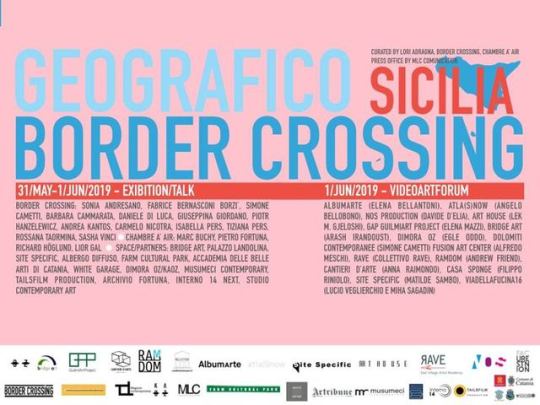
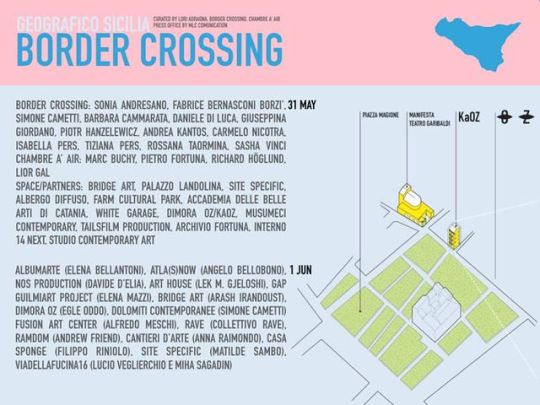
From May 30 to June 1, 2019 comes back to Palermo, Border Crossing, the project born from an idea of Bridge Art, Dimora Oz and Casa Sponge, curated by Lori Adragna and Andrea Kantos, inaugurated in 2018 among Manifesta 12 collateral events. The 2019 edition which inaugurates May 31 at 6:00 pm at the Garibaldi Theater, proposes the preview of a periodic format that will bring a selection of international spaces and cultural projects within the Sicilian territory. Border Crossing elaborates a synergy of public and private spaces to host productions and talks: Dimora OZ, at Palazzo Sambuca, KaOZ and the Garibaldi theater, three spaces within the program of Palermo Culture and Contemporary Magione, in a system of places of research, comparison and cultural production. The first appointment will be with Geografico #Sicilia, a project conceived by Chambres à Air, a platform created by Pietro Fortuna in Brussels. The project, which is coordinated by Lori Adragna and organized by Bridge Art / Border Crossing, involves a traveling journey by Marc Buchy (France), Pietro Fortuna (Italy), Richard Höglund (United States), Lior Gal (Israel) at various venues and art centers: (Bridge Art, Noto - Dimora Oz / KaOz, Palermo - Farm Cultural Park, Favara - Site Specific, Scicli - White Garage, Catania). The final event organized by Border Crossing will take place in Piazza Magione, with the artists of Geografico #Sicilia and a group show curated by Lori Adragna, with Sonia Andresano, Fabrice Bernasconi Borzì, Marc Buchy, Simone Cametti, Barbara Cammarata, Daniele Di Luca , Pietro Fortuna, Richard Höglund, Lior Gal, Giuseppina Giordano, Piotr Hanzelewicz, Andrea Kantos, Carmelo Nicotra, Isabella Pers, Tiziana Pers, Rossana Taormina, Sasha Vinci.
more HERE
#bordercrossing#border crossing 2019 Palermo#bordercrossing_collateral event Manifesta12#lori adragna#pietro fortuna#bridge art#dimora oz#whitegarage#rossanataormina#rossana taormina#group exhibition#Group show#palazzo sambuca#geografico#artist on tumblr#artists on tumblr#art#contemporary art#Palermo#sicilia#2019#collateral event#manifesta12
3 notes
·
View notes
Photo

ATTRAVERSO
a cura di Valentina Lucia Barbagallo, Cristina Costanzo, Danilo Lo Piccolo, Giuseppe Mendolia Calella
PALERMO, MAGGIO – NOVEMBRE 2018
Si terrà in diverse sedi palermitane, da maggio a novembre 2018, la rassegna “Attraverso”, nata dall’idea di un gruppo di giovani operatori culturali attivi in Sicilia: Valentina Lucia Barbagallo, Cristina Costanzo, Danilo Lo Piccolo, Giuseppe Mendolia Calella.
Il titolo della rassegna, “Attraverso”, racchiude gli obiettivi di questa serie di eventi, eterogenei e multiformi ma accomunati da uno sguardo trasversale e obliquo sui fenomeni del contemporaneo.
Campo d’azione della rassegna è Palermo - interessata nel 2018 da iniziative di grande richiamo come Manifesta 12 e Palermo Capitale Italiana della Cultura - con particolare attenzione ai luoghi, spazi “off” che non fanno parte dei circuiti tradizionali degli eventi espositivi della città e ospiteranno arti figurative, performance, illustrazione, editoria indipendente, incontri, musica, workshop, comunicazione – radio.
Conoscere, Ri-appropriarsi e Prendersi cura: questi sono gli step del progetto che punta ad aprirsi alla comunità ricorrendo alle molteplici espressioni della cultura.
Il programma di “Attraverso” si articola in progetti, mostre, conferenze, dibattiti, workshop, presentazioni di libri e open call che vedranno coinvolti diversi artisti tra cui: Marcella Barone, Andrea Bianconi, Canecapovolto, Sergio Cardillo, Simone Caruso, Luca Crivello, Giorgio Distefano, Stefania Fabrizi, Zoltan Fazekas, Ellie Ivanova, Francesco Lauretta, Gianluca Lombardo, Loredana Lo Verde, Federico Lupo, Marilina Marchica, Chiara Polizzi, Francesco Surdi, Sara Vattano.
Tra le sedi della rassegna ci sono gallerie d’arte e spazi pubblici, tra cui 091 Art Project; LURU’- Maison d'Artiste; Kéramos, studio d’arte e restauro; Palazzo Palagonia; la Chiesa di Santa Maria del Piliere; l’Oratorio di San Mercurio; la Chiesa di San Mattia dei Crociferi.
“Attraverso” fa parte degli eventi di Palermo Capitale Italiana della Cultura 2018.
Nel mese di maggio la rassegna propone cinque appuntamenti.
Il 13 maggio, dalle ore 10.30, presso la Chiesa di San Mattia dei Crociferi in via Torremuzza 28, si terrà la presentazione del volume di Giulia Alonzo e Oliviero Ponte di Pino “Dialogo a partire da Dioniso e la nuvola. L'informazione e la critica teatrale in rete: nuovi sguardi, nuove forme, nuovi pubblici” (Franco Angeli). Interverranno: Marco Canzoneri (Progetto Adiacenze), Giuseppe Massa (Compagnia Multietnica), Margherita Ortolani (Spettatori Migranti, Progetto Diverse Visioni), Giovanna Velardi (coreografa, docente Scuola TMO). Modera Vincenza Di Vita, giornalista e critica teatrale. (Evento inserito nel calendario delle attività della Settimana delle Culture).
Il 14 maggio, dalle ore 16.00, a Palazzo Palagonia in via IV Aprile 19-25, si terrà la mostra-conferenza “Tema Celeste”, promossa dall’Archivio Pappalardo e da Balloon Project, a cura di Valentina Barbagallo. La mostra-conferenza dedicata alla rivista d’arte contemporanea Tema Celeste, fondata nel 1982 da Demetrio Paparoni che l’ha diretta fino al 2001 prima dalla sede di Siracusa e poi da quella di Milano, presenta gli originali realizzati da Maurizio Cannavacciuolo, Giuseppe Gallo, Sergio Fermariello, Felice Levini, Cristiano Pintaldi, Michelangelo Pistoletto, Serse, Emilio Vedova, Gunter Brus, Jake and Dinos Chapman, Jim Dine, Martin Disler, Jorge Immendorf, Komar e Melamid, Sol Lewitt, Manuel Ocampo e molti altri.
Interverranno: Valentina Barbagallo, Cristina Costanzo, Gabriella Renier Filippone, Danilo Lo Piccolo e Filippo Pappalardo.
(Evento inserito nel calendario delle attività della Settimana delle Culture).
Il 18 maggio, dalle ore 17.30, a Palazzo Palagonia in via IV Aprile 19-25, si terrà la conferenza curata da Danilo Lo Piccolo “Eredi testimoni e protagonisti dell'Associazionismo a Palermo. Storia di un fenomeno culturale”. Nella stessa occasione verrà presentato l’intervento“Today” di Pablo Dilet.
(Evento inserito nel calendario delle attività della Settimana delle Culture).
Il 19 maggio, alle ore 18.30, s’inaugura presso Kéramos, studio d’arte e restauro, in via Catania 7, la mostra personale di Chiara Polizzi, a cura di Danilo Lo Piccolo.
(Evento inserito nel calendario delle attività della Settimana delle Culture).
Il 26 maggio, alle ore 18.00, presso la Galleria Beatrice, Palazzo Sambuca, via Alloro 36, verrà presentato il volume di Cristina Costanzo,“Per la raccolta museale del Teatro Massimo di Palermo” (Palermo University Press). Ne discutono con l’autrice, Gioacchino Barbera, Maria Concetta Di Natale, Antonino Giuffrida.
Ufficio Comunicazione
Account senior: Valentina Barbagallo, Giuseppe Mendolia Calella
Account junior: Lucia Maniscalco
Per maggiori informazioni
attraversoartiinrassegna.tumblr.com
www.balloonproject.it
Contatti
Social
www.facebook.com/attraversoartinrassegna
www.instagram.com/attraverso.info/
0 notes
Text
VOYAGE : LA SICILE, ENTRE TERRE ET MER
Les cours sont finis. Les week-end prolongés s’enchaînent. Les vacances approchent. Pour autant, tu n’as encore aucun projet de défini. Tu veux partir, mais pas trop loin quand même. Tu veux du dépaysement, mais la plage à proximité. Tu veux un ventre plat, mais pour autant ne pas te priver de bon repas. J’ai trouvé la destination qu’il te faut. La seule, l’unique, la vraie. La Sicile. Cette petite île, au sud de la jolie botte italienne, aux multiples facettes. Là, tu pourras profiter de la plage, mais aussi alterner avec des randonnées sur des sites grecs. À l’horizon, tu apercevras les montagnes, les cratères, côtoyant le fameux volcan : l’Etna. Tu ne sauras quel parfum choisir pour ta brioche-glace, ni même si tu dois opter pour les traditionnelles pizzas, pâtes ou encore une salade. Tes cinq sens seront en éveil dans cette merveilleuse région. Tes yeux n’en reviendront pas de tant de beauté. Tes papilles et ton palais attendront patiemment que la fourchette ne viennent dans ta bouche. Ton ouïe appréciera le calme qui sévit en haut des montagnes et l’agitation de la population. Ton toucher t’accompagnera à chaque visite. Enfin, ton odorat détectera les effluves de la pizza Margherita. Que faire en Sicile ? Je t’aide alors à préparer ton séjour en terre inconnue… TRAPANI Trapani est une ville très agréable. La mer couleur turquoise et ses vagues qui se fracassent contre les rochers apaisent. Déambuler le long de la mer, et marcher à travers la ville sans savoir où nos pieds nous mènent. Entre terre et mer. Après être resté longtemps à même le sol, pourquoi ne pas prendre un peu de hauteur ? Direction la télé-cabine de Trapani pour se rendre à Erice, un petit village fortifié particuli��rement touristique. Des rues pavées, étroites et plus que raides, mais qui en valent la peine. Vraiment. Découvrez-y le Château de Venère d’où vous aurez une vue à 360° de la ville. Enfin, un petit détour aux saline de Trapani s’impose, réserve naturelle protégée de marais salants. Un petit moulin à vent fait office de point de repère. Une fois sur place, une montage de sel surplombe l’espace. L’eau, quant à elle, possède des reflets rosés sous l’effet du sel. SAMBUCA DI SICILIA + SELINUNTE
Non loin du site archéologique de Selinunte, une petite ville couleur pastel, Sambuca di Sicilia dans laquelle se trouve une imposante et impressionnante église. Santuario di Maria. Afin d’y ajouter un peu de gaieté, des lampions rouge et vert sont suspendus aux quatre coins des rues. Patriotisme italien. Si vous continuez d’arpenter encore un peu le quartier, vous arriverez sur ce qui apparaît être un ancien temple grec. De là, une vue imprenable. De la verdure à perte d’horizon. Une bouffée d’air frais. Un calme remarquable. Cette ville mérite amplement son titre de Borgo de borghi, autrement dit du plus beau village d’Italie, reçu en 2016.
Saviez-vous que la Sicile était une ancienne possession grecque ? En vous rendant sur le site de Selinunte, vous en aurez réellement conscience. Cet endroit est véritablement incroyable. Des temples ici et là. Des vestiges, des pierres, des restes cachés par ces herbes hautes et sèches. Un spot idéal pour les amoureux de la photographie ! Non loin de là, un musée archéologique concentrant petits et grands objets datant de la période gréco-romaine. Puis, une seconde partie du site se trouve à cinq minutes du premier. Là, un seul temple, qu’on ne peut approcher de trop près. En revanche, vous pourrez gambader pour être, une nouvelle fois, entre terre et mer. SCIACCA Des marches en mosaïques colorées vous guideront en haut de cette ville où palmiers et mer vous attendent. Un décor à couper le souffle. AGRIGENTO Un nouveau site greco-romain vous attend. La valle dei templi. La vallée des temples. Comme son nom l’indique, des temples partout. Pour autant, on ne s’en lasse pas. Vestiges ou non, ce décor attire et intrigue toujours autant. Des petits chemins vous permettront également d’avoir une vue encore plus spectaculaire sur la ville et le site protégé du patrimoine de l’UNESCO. Vous passerez aussi devant ce fameux temple précédé d’une imposante statue en bronze représentant Héraclès. Enfin, un peu...d’exotisme avec quelques charmants boucs qui vous observeront...patiemment. SIRACUSA Que dire ? Entre ancienneté et modernité, entre terre et mer, Syracuse offre à ses touristes un décor hors norme. Une grande place, immaculée, où trône la solennelle cathédrale d’Ortygie, contraste avec une balade le long de la mer lonienne, bleu turquoise. NOTO Ses rues étroites ne facilitent pas la conduite. Pour autant, une fois sur place, les complications survenues sont rapidement oubliées. L’une des plus belles églises de la région est à l’entrée de la ville. L’église de San Dominico. Voluptueuse, épurée, ses hauts plafonds et ses vitraux vont laisseront de marbre. Puis, une fois la granita au citron finie, la grande place est à proximité. Assis sur les marches, dos à la majestueuse cathédrale de Noto et face au Palazzo Ducezio où se trouve la mairie, le temps passe. Rêvasser devient facile à cet instant. Si l’exposition a encore lieu lors de votre séjour, vous aurez la chance d’admirer le travail effectué par des collégiens en l’honneur de Monte Carlo : une rue parsemée de fleurs, chaque œuvre représentant une église, un oiseau, etc. CASTIGLIONE Cette ville est excellente pour les amateurs d’église ! On en compte plus d’une quinzaine, allant de la plus baroque, à la plus moderne. Tous les styles sont réunis pour vous séduire au moins une fois.
ENNA Le must du must. L’ETNA. Ce non moins célèbre volcan sicilien. Plusieurs options s’offrent à vous. Le fleuve d’Alcantara, à savoir les gorges du fleuve. Si vous ne craignez pas de marcher sur des galets et autres pierres pointues, dans une eau claire et assez froide, il faut le reconnaître, et à contre-courant, alors vous pourrez vous baignez dans cette crique rocheuse. Ensuite, un coup de cœur. A Mojo Alcantara, vous apercevrez une grande montagne marron. D’extérieur peu chaleureux, il s’agit en fait d’un cratère. Il est possible d’y grimper, et vivement conseillé ! En haut, des moutons et leur berger vous attendent, tout comme la vue imprenable. Une végétation et des couleurs qui contrastent avec la première impression. Enfin, l’Etna en lui-même. Les laves volcaniques ont laissé derrière elles milles et une surprises. Des petites pierres légères de l’Etna en souvenir vous repartirez avec. Tout petit cratère, pierres, sol noir, montagne verte et végétation, tout les ingrédients sont réunis pour que vous en preniez plein les yeux. TAORMINA Récemment a eut lieu le G7 à Taormine. Le dispositif policier était assez impressionnant à une semaine de sa tenue. Pour autant, cela n’a rien enlevé au charme de cette magnifique ville. S’il y a bien une ville que je recommande, c’est celle-ci. Avant d’attaquer ce qui donne tout son charme à Taormine (l’arène et une vue à couper le souffle), allez donc regarder les vestiges d’un petit théâtre romain, l’Odéon. Maintenant, rendez-vous au théâtre grec de Taormine, l’a.r.è.n.e. Le plus haut possible dans les gradins. Et asseyez-vous. Contemplez. À droite, l’Etna en éruption. À gauche, la mer. Derrière, la plage, la mer, la ville. Continuez de prendre de la hauteur et d’apprécier ce patrimoine et cette nature. En somme, vous aurez compris que cette région italienne regorge de secrets, et est une vraie bouffé d’air frais. Non seulement tous les éléments de la Nature sont réunis, mais autre bon point, en Sicile, vous n’aurez pas à vous soucier de votre budget. Les prix pour se restaurer sont plus qu’abordables (3€ une pizza Margherita, 2€50 l’arancini, 3€ la glace-brioche, etc). La seule difficulté que vous aurez sera donc de faire un choix entre différents mets. Enfin, cette partie de l’Italie est aussi malheureusement connue pour sa mafia (Cosa Nostra). Alors oui, il vous sera peut-être demandé quelques pièces dans un parking ou dans des toilettes publiques. Mais cela ne devrait pas gâcher le merveilleux séjour qui se profile.
0 notes
Photo
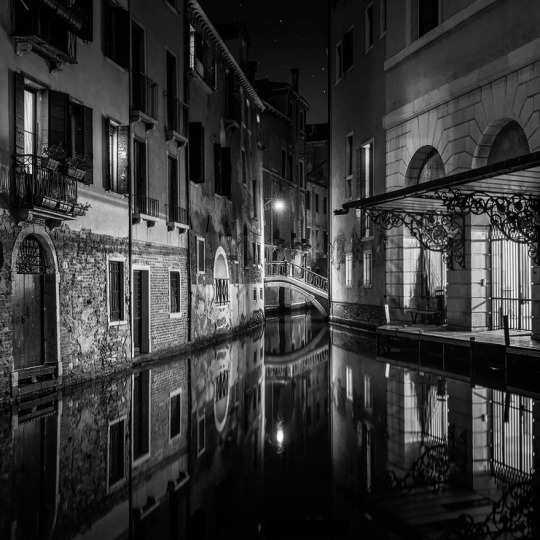
The World of Cadello encompasses music, illusion, mystery, hidden secrets, style, sophistication, fantasy, sensuality, entertainment and romance.
Opera is one of the greatest vehicles available to express all these elements in physical form.
In normal times, opera season is in full swing each January.La Fenice in Venice is one of the few opera houses in the world accessible directly by water.
Of those, the water entrance to La Fenice is arguably the most steeped in history and the most visually alluring.
The water entrance of La Fenice acts as a portal. People disembark their gondolas in their evening gowns, ascend a few stairs and pass through the entry into the spectacular worlds that await on stage.It is a place of magic, awe and wonder.
#Cadello88 #Cadello #craftcocktails #craftcocktail #wintercocktails #fridaynight#staranise #hazelnuts #elderflower #elderberry #Vanillapod #Sambuca #Góndola #Gôndola #Gôndola #Gondolas #Palazzos #Cocktailshaker #Cocktailshakers #Cocktailjigger #Cocktailjiggers #Jigger #Jiggers #Sophisticatedstyle #Sophistication #Mysteriousness #Illusions #Illusive #lafenice
0 notes
Photo
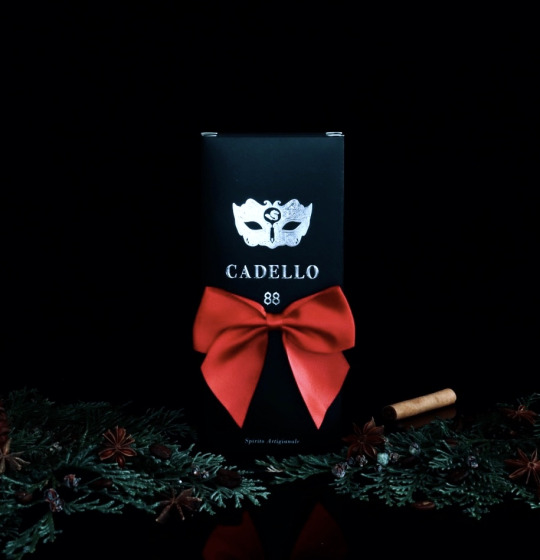
#Cadello88 #Cadello #craftcocktails #craftcocktail #wintercocktails #fridaynight #staranise #hazelnuts #elderflower #elderberry #Vanillapod #Sambuca #Góndola #Gôndola #Gôndola #Gondolas #Palazzos #Cocktailshaker #Cocktailshakers #Cocktailjigger #Cocktailjiggers #Jigger #Jiggers #Sophisticatedstyle #Sophistication #Mysteriousness #Illusions #Illusive #orientexpress
0 notes
Photo

The perfect warm, winter drink...
Hot Cocodello
15ml Cadello
15ml Bailey's
100ml Milk
Teaspoon Cocoa Powder
Teaspoon Brown Sugar
Heat milk, sugar and cocoa powder.
Stir until thick.
Pour Cadello and Bailey's into a glass and then pour the heated cocoa milk top.
Stir well.
Garnish with cinnamon and cocoa powder.
#Cadello88 #Cadello #craftcocktails #craftcocktail #wintercocktails #fridaynight #staranise #hazelnuts #elderflower #elderberry #Vanillapod #Sambuca #Góndola #Gôndola #Gôndola #Gondolas #Palazzos #Cocktailshaker #Cocktailshakers #Cocktailjigger #Cocktailjiggers #Jigger #Jiggers #Sophisticatedstyle #Sophistication #Mysteriousness #Illusions #Illusive #orientexpress
0 notes